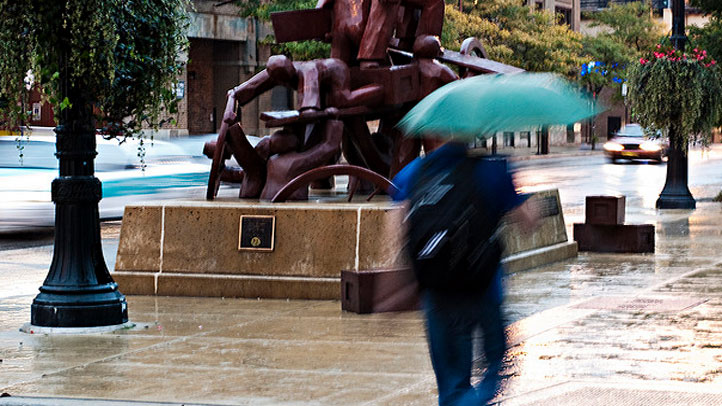When could the Chicago area see its first snowflakes? The answer could come just in time for the start of the holiday season.
According to the National Weather Service, Chicago typically sees its first trace of snowfall, defined as snowfall of less than one-tenth inch, by Oct. 31. That same data also showed the city typically sees its first measurable snowfall, defined as any amount of snow of one-tenth inch or more, by Nov. 18.
This year, the city has not yet seen either, as of Nov. 15.
It's not unexpected, however, as predictions have shown that area temperatures are, and will likely continue to be, above average for this time of year.
The Climate Prediction Center's latest modeling showed there is a “70-to-80% chance that the city, along with the rest of Illinois, will see above-average temperatures between Nov. 14-22."
Still, the first snowflakes could soon be on the horizon, but it'll all depend on how a wet system sets up.
Beginning Monday night, an active weather pattern arrives, NBC 5 Meteorologist Alicia Roman said this week, leading to rain into Tuesday morning. Monday and Tuesday will likely see warmer temperatures before a big drop by Thursday, she said, as the chance for the first flakes of the season moves in.
Weather
According to NBC 5 Meteorologist Iisha Scott, there's a chance some snow could mix in with the rain Wednesday night and into Thursday, but "that depends on how much moisture is left as colder air moves in."
As of Friday, however, the system appeared to trend more toward rain, and Scott said even if there are some snowflakes, it won't amount to much.
Feeling out of the loop? We'll catch you up on the Chicago news you need to know. Sign up for the weekly Chicago Catch-Up newsletter.
By the end of the next 10 days, temperatures are expected to have dropped into the upper 30s and low 40s.
For those curious, the latest Chicago has gone without a trace to snow to begin the season was Dec. 5, 1999. The latest first measurable snowfall of the year occurred in Dec. 2021, when the city didn’t see one-tenth of an inch of snow or more until three days after Christmas.



